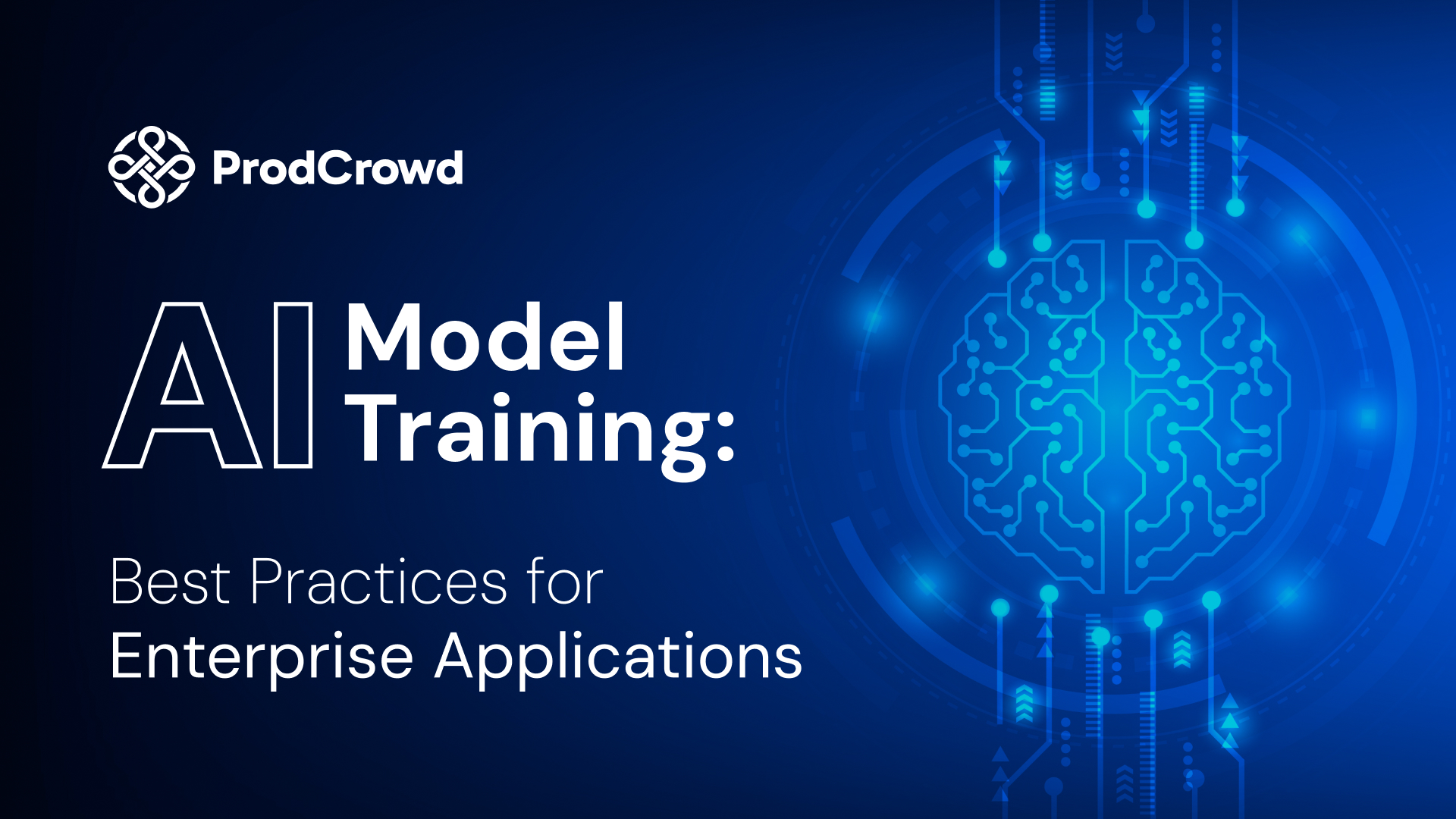Artificial Intelligence has become a competitive advantage for enterprises, but success doesn’t come from algorithms alone. The real value lies in how effectively organizations handle AI model training—the process of teaching algorithms to make accurate, reliable, and scalable decisions.
In this guide, we’ll explore the best practices enterprises should follow to ensure their AI models deliver long-term impact and business value.
Why AI Model Training Matters
AI models are only as good as the data and training strategies behind them. Poorly trained models can lead to biased outcomes, inaccurate predictions, and wasted resources. On the other hand, well-trained models can power applications like fraud detection, predictive analytics, and personalized recommendations.
That’s why enterprises are turning to expert partners like ProdCrowd to ensure their AI initiatives are built on solid foundations.
Start With High-Quality Data
Data quality is the backbone of effective AI. Enterprises should focus on collecting large, diverse, and representative datasets. Cleaning and preprocessing steps like removing duplicates, normalizing values, and labeling data correctly reduce noise and improve accuracy.
Without a strong data pipeline, even the most advanced algorithms will struggle to perform well in production.
Define Clear Objectives
Before diving into training, it’s essential to align AI projects with business goals. Are you aiming to optimize supply chain operations, improve customer retention, or detect anomalies in real time?
Clear objectives not only guide the data strategy but also help measure model performance against real business outcomes.
Choose the Right Algorithms and Frameworks
Different enterprise use cases call for different models. Deep learning architectures may excel in image or speech recognition, while classical machine learning models can be more efficient for structured data problems.
Frameworks like TensorFlow, PyTorch, and JAX provide the flexibility to build and scale, but the selection should match your infrastructure and integration requirements.
Monitor for Bias and Fairness
Bias in training data can lead to skewed predictions that damage trust and compliance. Enterprises should implement fairness checks during AI model training, including monitoring for underrepresented groups and testing outputs against ethical standards.
Regular audits and retraining help ensure the AI system remains transparent and fair across different scenarios.
Optimize for Scalability
Training doesn’t stop when the model reaches accuracy benchmarks. Enterprise applications require scaling models for millions of users and data points. Techniques like distributed training, model compression, and cloud-based infrastructure help AI systems run efficiently at scale.
This ensures that the model is not just accurate but also reliable in real-world conditions.
Continuously Monitor and Retrain
AI models degrade over time as data patterns evolve. Continuous monitoring ensures models adapt to new conditions, such as changing customer behavior or emerging risks.
Enterprises often establish retraining cycles—weekly, monthly, or quarterly—based on how dynamic their data is. This keeps AI systems relevant and effective in fast-changing industries.
Leverage Expert Consulting
For enterprises without deep in-house expertise, strategic guidance is critical. Professional AI consulting services can help identify the right approach, choose frameworks, build scalable infrastructure, and maintain long-term performance.
This accelerates the path to value while avoiding common pitfalls in AI development.
Final Thoughts
Effective AI model training is more than a technical task—it’s a business strategy. By focusing on data quality, fairness, scalability, and continuous improvement, enterprises can turn raw information into powerful AI-driven outcomes.
With the right expertise from partners like ProdCrowd, organizations can unlock AI’s full potential and ensure their solutions deliver measurable impact.
FAQs
1. What is AI model training?
It’s the process of teaching algorithms to make predictions or decisions by learning from labeled or unlabeled data.
2. How long does enterprise AI model training take?
It varies by complexity—simple models can take days, while deep learning systems for enterprises may take weeks or months.
3. Why do AI models need retraining?
Data patterns evolve over time, and retraining ensures accuracy, fairness, and business relevance.
4. How can bias be reduced in AI models?
By diversifying training data, monitoring outputs, and applying fairness frameworks during the training process.

